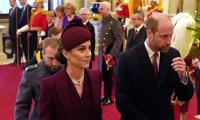Islamabad : An analysis of the national budget in the current post-devolution regime has revealed a decline in the education sector's share from 13 per cent in the fiscal year 2019-20 to 11 per cent in 2022-23.
The funding cut occurred despite a 38 per cent increase in the overall annual national education allocations, which rose from Rs997.27 billion in 2019-20 to Rs1.37 trillion in 2022-23, according to a Pakistan Institute of Education report titled ‘Public Financing in the Education Sector.’
Though most provinces and regions in the country showed a downward trend in their education budget shares, Islamabad Capital Territory and Azad Jammu and Kashmir maintained their outlay of three per cent and 21 per cent, respectively.
The report highlighted discrepancies in the provinces' commitment to education funding, with Khyber Pakhtunkhwa displaying notable volatility and Balochistan managing to keep a more consistent share.
According to it, public spending on education in Pakistan during 2022-23 accounted for 1.5 per cent of gross domestic product, the broadest measure of national economic activity.
With education being a provincial responsibility following decentralisation, the federal government earmarked Rs1.37 trillion for education in the year, representing 11 per cent of the total Rs12.16 trillion budget—a decrease from 13 per cent in 2019-20.
On average, provinces and regions allocate over 18 per cent of their budgets to education every year.
In 2022-23, the federal government designated Rs152.07 billion for education from a total budget of Rs4.46 trillion, equating to three percent only.
However, Punjab earmarked Rs490.68 billion (13 per cent) for education out of its total budget of Rs3.65 trillion, Sindh Rs284.18 billion (14 per cent) from its total of Rs2.02 trillion, Khyber Pakhtunkhwa Rs308.39 billion (25 per cent) from a total budget of Rs1.24 trillion, and Balochistan Rs88.86 billion (16 per cent) of its total Rs541.04 billion budget.
At the regional level, Azad Jammu and Kashmir doled out Rs35.32 billion (21 per cent) from Rs171.95 billion budget and Gilgit-Baltistan Rs14.23 billion (16 per cent) from its Rs86.32 billion budget.
In 2022-23, public expenditure on education at the national level totalled Rs1,297.55 billion, an increase from Rs936.04 billion in 2019-20.
Of the expenditure, the federal government contributed 12 per cent (Rs159.41 billion), provinces 84 percent (Rs1.09 trillion), and AJK and GB governments four per cent (Rs48.84 billion).
The overall budget utilisation remained stable at 94 per cent across the years reviewed, with a slight increase to 96 per cent in 2021-22. However, the federal government experienced overspending at 105 percent, largely due to recurring expenses in pre-primary, secondary, and tertiary education, while KP reported the lowest utilisation rate at 82 per cent for the same year.
While the federal government raised its education sector outlay by 34 percent, provincial and regional governments theirs by 39 and 28 per cent, respectively, nominal allocations for the development budget increased by 31 percent.
However, recurring expenditure significantly outweighed development funding at the national level, with a ratio of 88:12 in 2022-23. Among provinces, around 20 per cent of their total budgets were approved for education, but recurring expenditure consumed most of the amount.
The report showed that the federal government prioritised tertiary education in Islamabad, allocating 80 percent of its education budget to the sector. In contrast, Punjab focused on district education (75 percent) and secondary education (12 percent), Sindh on secondary education (31 percent), KP on elementary and secondary education (74 percent), and Balochistan on secondary education (38 percent).
At national level, pre-primary and secondary education is the most populous section of the education sector but it is receiving just 40 percent of total education budget despite having large number of public sector educational institutions and enrolment therein. Even now, 20.2 million children of school-going age (77 percent of 26.2 million out-of-school children in Pakistan) aren't enrolled for formal education.
The report called for substantial government funding to address high illiteracy, insufficient infrastructure, low enrolments, high dropouts, and inequality in provision of schooling. It also underscored the need for building the capacity of education policymakers, planners, managers, and other stakeholders to ensure optimal and equitable use of financial resources.
Ministry of Human Rights launches 16 days of VAW at PNCA, Federal Minister for Law and Justice and Human Rights, Azam...
Children on the way to their school. — Online/FileRawalpindi:All Pakistan Private School Management Association ...
The representational image shows an employee taking a meter reading with his smartphone at a commercial building in...
Women are busy shopping at the market on December 2, 2024. — APPIslamabad:CDA’s weekly Bazaar at Peshawar Mor, one...
Representational an image of a Chromebook. — Pixabay/FileIslamabad:The Ministry of Federal Education and...
Representational image of an ambulance approaching an incident site. — AFP/FileRawalpindi:Due to the strategy of...







